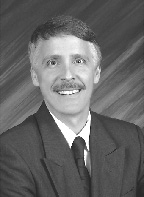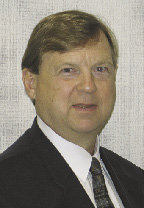After 10 years of effort by environmental and legal professionals and members of the legislature and state government to address the convergence of regulations, uncertainties and liabilities that result in stagnation for many brownfields; through Public Act 11-141 Connecticut now has meaningful change and is moving us in the right direction. This is one of the toughest real estate markets in Connecticut's history for developers and owners of brownfield sites. Connecticut's new Department of Energy and Environmental Protection is beginning the process of streamlining and standardizing approaches for assessing and remediating brownfield sites for redevelopment.
In response to the economic pressures, Connecticut's legislative and governmental leaders have been listening to businesses in order to create an environment for attracting business investment, innovation and job growth. The good news under P.A. 11-141 is the liability relief for prospective developers, innocent land owners and contiguous land owners who did not contaminate the property. Section 17 of the Act protects developers meeting the definition of bona fide prospective purchasers. Up to 32 such fortunate developers will now be applicants to a state administered redevelopment competition. Your right to liability relief will be awarded through satisfying the land use "portfolio criteria" listed in the legislation. Criteria include economic, environmental, socially beneficial project attributes that you can competitively apply for under the Section 17 program. This competition will be available soon for 32 applicants per year through applications to the Department of Economic and Community Development (DECD). Applicants can be businesses, nonprofit organizations, municipalities, public/private municipal economic development agencies and state agencies. More good news; applicants accepted to the Section 17 program receive liability protection immediately upon acceptance. New development deals can now be created where the risks due to third party claims resulting from off-site contamination remain with the polluter or immediate past owner of the polluted site or other responsible parties. The buyers and sellers will need to be careful and proactive to address how off-site liabilities will be allocated among the stakeholders. Lawyers will address these details and hopefully the best projects will take advantage of this program.
More Transformation Progress by Connecticut DEEP
DEEP has asked Licensed Environmental Professionals, environmental attorneys, and various stakeholders to engage in a visioning process to examine how Connecticut's Cleanup Laws can be transformed. We have participated in the remediation roundtable sessions and are encouraged that the DEEP is trying to cut out waste, inefficiency and complexity that do not add value to protecting the public, the environment or completing the cleanup process. The DEEP has been very transparent and have posted the input received and a report of their findings on their web site. They are charged with reporting the progress to the legislature and intend to draft regulations to further this effort. As they say about rulemaking , "make sure you are at the roundtable so you are not served as the meal." We all know the process could benefit from streamlining and standardizing the parts of the process that can be made efficient. The DEEP has currently issued a Draft Fact Sheet on their website for conducting Targeted Brownfield Remedy or TBR. The intent is that if the remedy is known to fit the redevelopment site plan design, a standard TBR eligibility checklist, transmittal form can be developed to speed along the process of completing routine engineered controls and Environmental Land Use Restrictions. These are steps in the right direction.
The Significance of the Phase II Environmental Investigation under Public Act 11-141
As with any long legislation addressing a complex subject, something unexpected always seems to become the subject of unintended consequences. In 11-141, the point at which one party such as the seller draws a liability line in the sand with the buyer has apparently become the point when the parties (LEPs, attorneys, clients and the DEEP) can agree the Phase II is complete. Developers have learned, sometimes the hard way, that the complete scope of a Phase II is a professional opinion of a LEP, an attorney and guidance documents no matter how well intentioned become the subject of one's professional interpretation.
Wayne Cobleigh is manager of project development and Gary Cluen is a principal in GZA's Glastonbury, Conn. office.
Tags:
Public Act 11-141 - An act concerning brownfield remediation and development
September 15, 2011 - Connecticut










